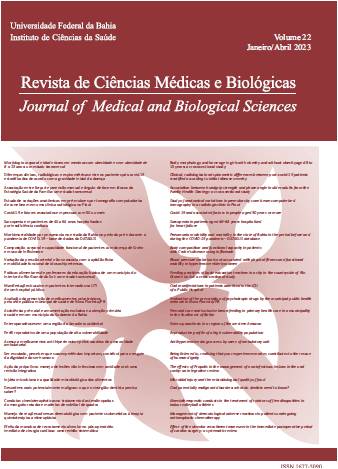Effect of the alveolar recruitment maneuver in the immediate postoperative period of cardiac surgery
a systematic review
DOI:
https://doi.org/10.9771/cmbio.v22i1.44110Keywords:
thoracic surgery; positive pressure breathing; physiotherapyAbstract
Introduction: Cardiac surgeries are the interventions of choice in more advanced levels of cardiovascular disease, and pulmonary complications can occur as a result of physiological changes caused by cardiopulmonary bypass, anaesthesia and the sternum thoracic incision. Physiotherapy acts with the aim of preventing and treating these complications, through the use of one of the most used lung expansion techniques in the reversal of hypoxemia and atelectasis, the alveolar recruitment maneuver, with the objective of opening collapsed alveoli and increasing gas exchanges. Objective: To systematically review the effects of the maneuver on the PaO2/FiO2 ratio, SatO2, duration of mechanical ventilation, length of hospitalization, incidence of atelectasis, mean arterial pressure and heart rate. Methodology: Review of controlled and randomized clinical trials in PubMed, Cochrane Library, LILACS and PEDro databases. Studies that used the maneuver to prevent pulmonary complications, published in English and Portuguese, were included. Results: 4 studies, published between 2005 and 2017, were included. The maneuver pressure level ranged from 30 cmH2O to 40 cmH2O. The studies showed that the maneuver was statistically relevant in relation to PaO2/FiO2, SatO2 and in reducing the incidence of atelectasis, with no impact on the duration of mechanical ventilation, length of hospitalization, mean arterial pressure and heart rate. Conclusion: The recruitment maneuver can be considered as a technique to be used in the prevention of pulmonary alterations; however, it is not possible to state whether the benefits of the maneuver lasted in the long term.
Downloads
Downloads
Published
How to Cite
Issue
Section
License
Copyright (c) 2023 Journal of Medical and Biological Sciences

This work is licensed under a Creative Commons Attribution 4.0 International License.
The Journal of Medical and Biological Sciences reserves all copyrights of published works, including translations, allowing, however, their subsequent reproduction as transcription, with proper citation of source, through the Creative Commons license. The periodical has free and free access.


